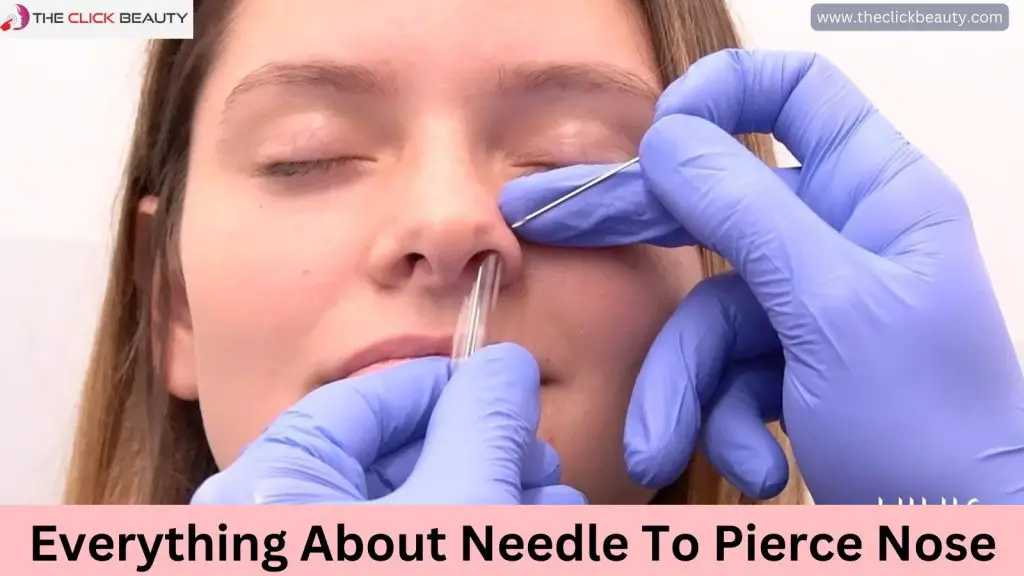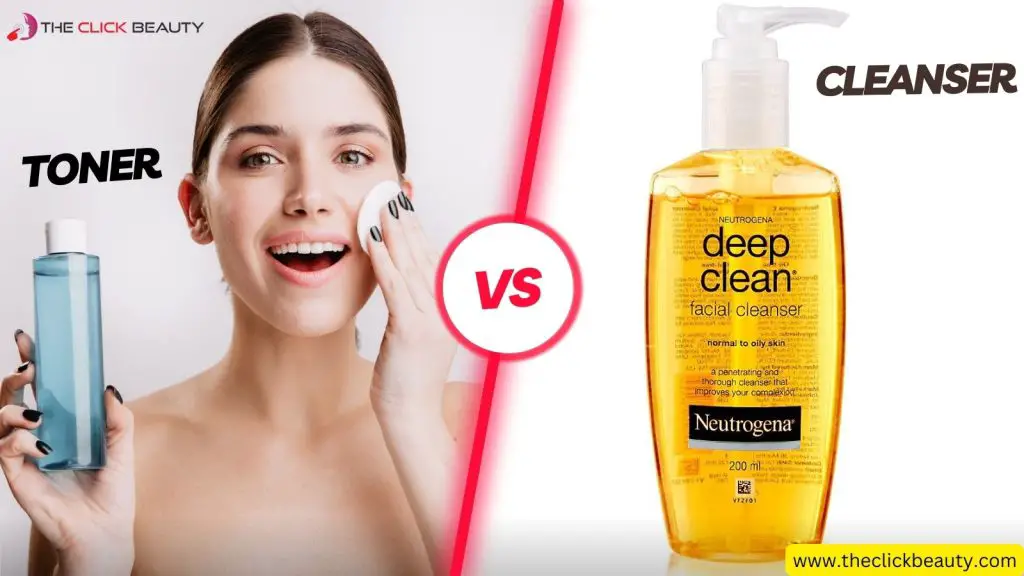Piercing your nose is a great way to add a unique touch to your look. But it’s important to be informed before you take the plunge. Before getting a needle to pierce nose, you’ll need to consider several things.
It includes the type of needle used and the safety of the procedure. This blog will provide all the information you need to get a nose piercing.
Types of Piercings
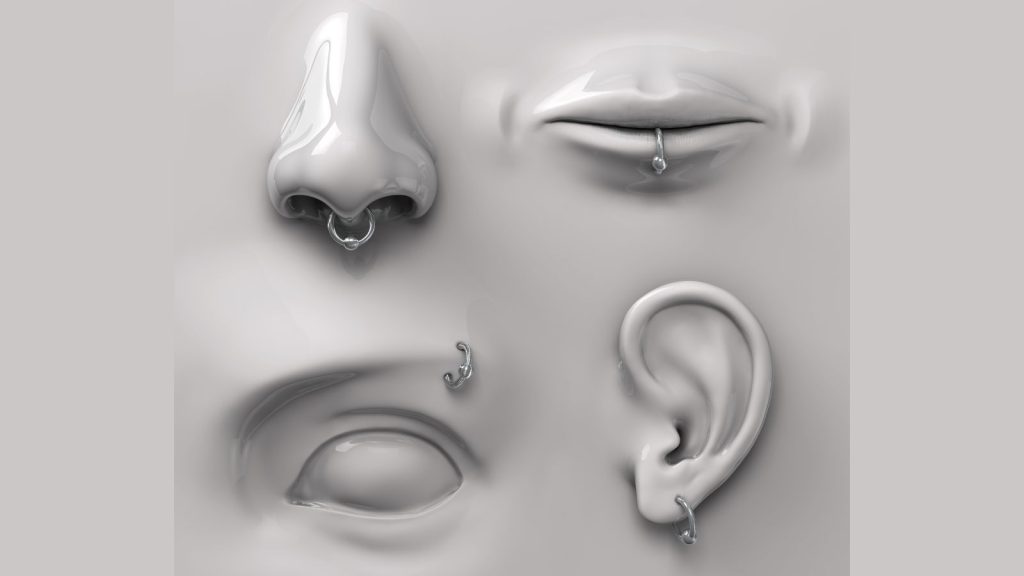
Piercings can be a fun way to express yourself and your unique style. They come in all shapes, sizes, and locations, with something for everyone! Read on to learn about the wide range of piercing options available!
Ear Piercings
There are many different types of ear piercings that you can get. The most common type is lobe piercing, which is a piercing of the fleshy part of the earlobe.
Other types of ear piercings include the tragus piercing, which is a piercing of the small cartilage in front of the ear canal, and the conch piercing, which is a piercing of the innermost cartilage of the ear.
Nose Piercings
Nose piercings are also quite popular, and there are a few different types that you can choose from. The most common type of nose piercing is the nostril piercing, a piercing of the fleshy part of the nostril.
Other nose piercings include septum piercing, a thin cartilage that separates the nostrils, and bridge piercing, a piercing of the fleshy area between the eyebrows.
Lip Piercings
Lip piercings are another type of body piercing that has become quite popular in recent years. The most common lip piercing is the labret piercing, a lower lip piercing.
Other lip piercings include the Monroe Piercing, a piercing placed off to one side of the upper lip, and the Medusa Piercing, which is placed in the center of the upper lip.
Tongue Piercings
Tongue piercings are also quite popular, and there are a few different types that you can choose from. The most common type of tongue piercing is the standard tongue piercing, a piercing placed in the center of the tongue. Other tongue piercings include webbing, horizontal tongue piercings, and snake bites.
Types of nose piercings
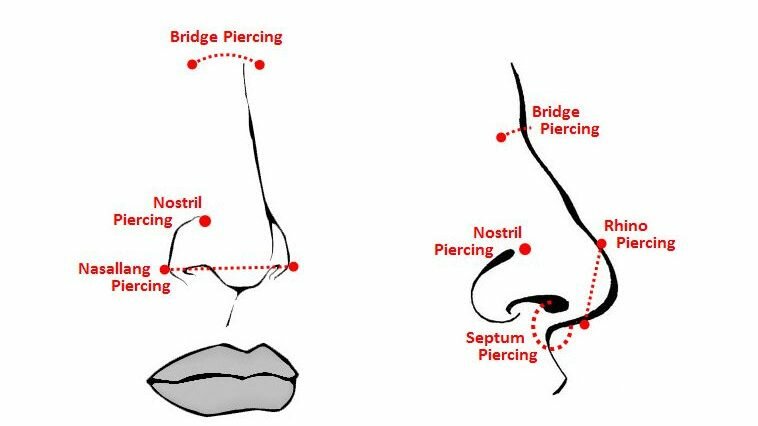
Nose piercings come in a variety of shapes and sizes. It is essential to do your research beforehand. Some common include:
- Nostril
- Septum
- Bridge
- Rhinoceros
- High nostril
Nostril
A nostril piercing is a piercing that goes through the side of the nose. It is one of the most popular types of nose piercings, and it can be done on either the left or right side of the nose.
Septum
A septum piercing is a piercing that goes through the cartilage in the center of the nose. It is becoming increasingly popular and can be a striking and unique piercing.
Bridge
A bridge piercing is a piercing that goes through the bridge of the nose, between the eyes. It is not as common as other nose piercings, but it can be beautiful.
Rhinoceros
A rhinoceros piercing is a piercing that goes through the side of the nose, near the nostril. It is not as common as other nose piercings, but it can be unique.
High Nostril
A high nostril piercing is a piercing that goes through the side of the nose, near the top of the nostril. It is not as common as other nose piercings, but it can be unique.
Each type has its own unique set of requirements when it comes to jewelry size and placement. It’s also important to note that some types may require more experience.
For example, septum piercings are considered one of the most challenging types because they involve passing a needle through cartilage rather than flesh.
Choosing a Needle To Pierce Nose
Piercing your nose can be a fun and unique way to express yourself. When picking the right needle for the piercing, research beforehand is essential.
One crucial factor to consider is the size – needles are available in various gauges, which will determine how large the piercing hole and jewelry will be.
Another critical factor is the needle quality – make sure to ask questions and source one that is sterile and has been created with quality materials.
Lastly, an experienced and professional piercer should use the needle when performing the piercing to ensure safety and optimal results.
Ultimately, choosing a needle that meets all these criteria will help you get a safe, stylish, worry-free nose piercing experience!
Different types of nose-piercing needles
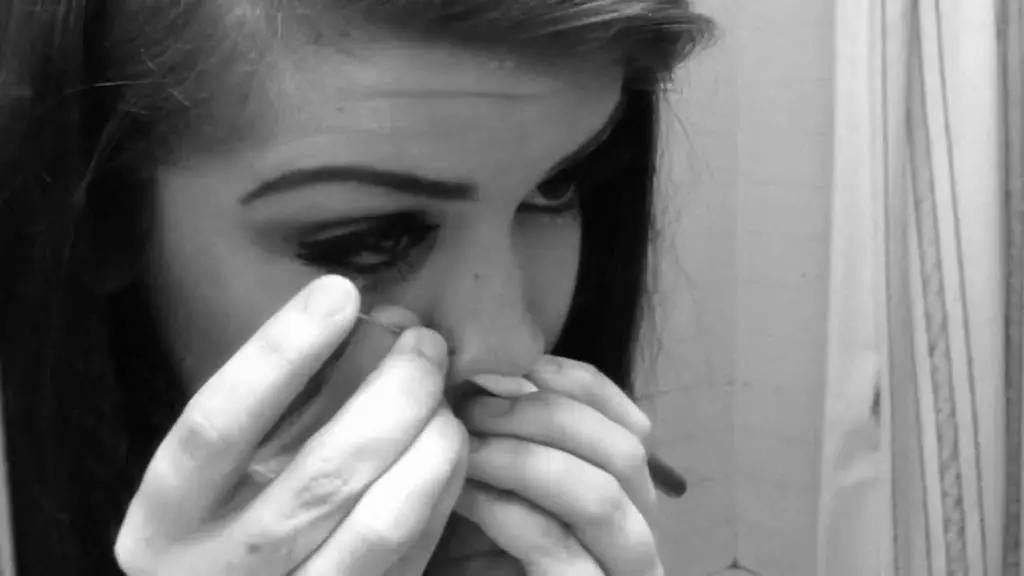
There are a few different types of nose-piercing needles that you can choose from, depending on your preferences. The most common type of nose-piercing needle is the hollow needle.
It is a long, thin needle that is hollow in the middle. This type of needle is typically used for piercings. They work through the cartilage, as they can help to minimize tissue damage.
Disposable nose-piercing needles
For a more sterile option, consider disposable nose-piercing needles. These needles are made from surgical steel. They are designed to be used once and then disposed of. It can reduce the risk of infection.
Curved nose piercing needles
Curved nose piercing needles are slightly curved. They can help to minimize tissue damage when the piercing is done. Curved needles are typically used for piercings that are done through the cartilage. There are fewer chances of complications if we use these needles.
Straight nose piercing needles
Straight nose piercing needles are the most common type. They’re long and thin and straight rather than curved. They work through the fleshy part of the nostril. If you want tissue damage on your skin, use Straight nose-piercing needles.
Titanium nose piercing needles
Titanium is a strong metal resistant to corrosion. This feature makes it an ideal material for body piercings. Titanium nose piercing needles are typically more expensive than others.
Gold-plated nose-piercing needles
Gold-plated nose-piercing needles are made from surgical steel and then plated with gold. It gives them a luxurious look. Gold-plated nose piercing needles are more expensive.
Stylish Nose Ring Hoops
14k Gold Nose Ring Hoop

This gold nose ring hoop is made of 14k gold and is an excellent choice for sensitive skin. The hoop is 20 gauge and has a diameter of 10mm.
Surgical Steel Nose Ring Hoop

This steel nose ring hoop is for sensitive skin. The hoop is 20 gauge and has a diameter of 10mm.
Titanium Nose Ring Hoop

Titanium is known for its strength and durability, making this hoop perfect for those seeking something long-lasting. This nose ring is safe to wear regardless of skin sensitivity or allergies.
Silver-Plated Nose Ring Hoop

This nose ring hoop is beautiful and comfortable. With its reusable design and lightweight feel, you can wear it for hours without feeling weighed down or worried about falling off.
Stainless Steel Nose Ring Hoop

Stainless steel resists tarnishing, so you don’t have to worry about losing its luster over time. This nose ring will turn some heads and ensure your look lasts all day.
Copper Nose Ring Hoop

A copper nose ring hoop adds a modern twist and an extra glimmer to any outfit! Classic hoop provides an alluring look and stands the test of time. Its incredible enduring quality also makes it perfect for regular wear.
Brass Nose Ring Hoop
A brass nose ring hoop has both international and historical appeal. Brass nose rings are used to symbolize social status or even marital status. Today, a brass nose ring hoop is often seen as a sign of individual self-expression, exuding edge, style, and attitude.

Aftercare Tips
Once you get your piercing, specific steps must be taken to ensure proper aftercare and healing time.
- First, ensure you keep the area clean by washing it twice daily with an antibacterial soap or saline solution (available at most drugstores).
- You must also avoid touching or playing with your new piercing as much as possible.
- It can cause infection or irritation if done too often!
Finally, make sure to follow any additional instructions given by your piercer regarding cleaning techniques.
Piercing your nose can be a great way to express yourself and showcase your style – but make sure you do your research first! From choosing the right type of piercing for your lifestyle needs through aftercare tips – this blog has outlined everything needed for getting a successful new nose piercing!
With these tips in mind, now is the perfect time to take advantage of this trend! Start researching today so you can start expressing yourself tomorrow!
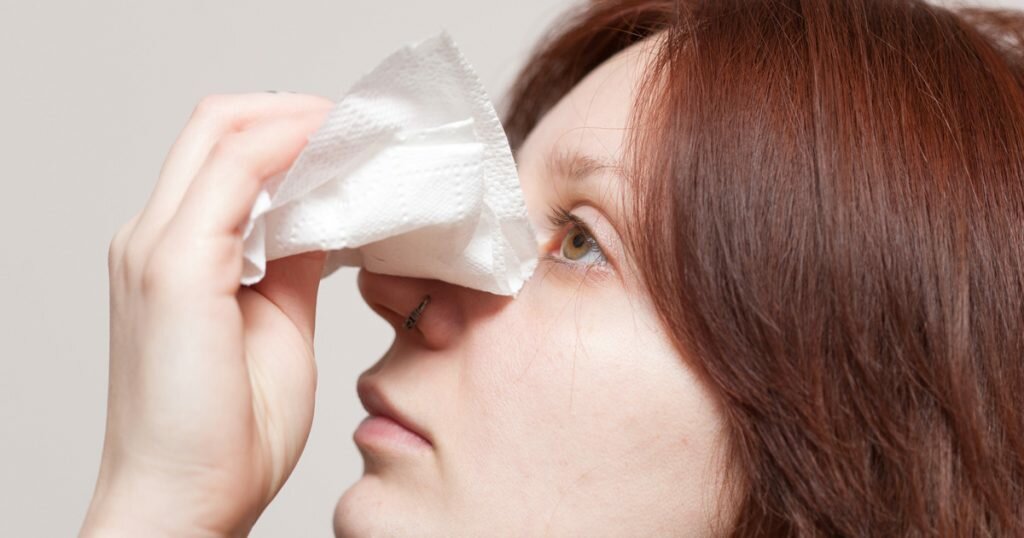
What gauge needle do you use for a nose piercing?
The gauge needle to use when piercing the nose depends on several factors. Most people opt for a stud or ring that is 16, 18, or 20 gauge in size for a nose-piercing. A smaller size will create a tighter fit and may be more comfortable because it’s less visible.
However, larger gauges allow for more effortless healing and the insertion of larger jewelry. It is essential to consult with an expert piercer before beginning a nose piercing.
Can I use a 14 gauge needle for nose piercing?
The answer is yes–it is one of the most common sizes used for a nose piercing and can produce excellent results. However, choosing a reputable piercer with experience in the specific type of piercing you would like is always essential.
Is it OK to pierce your own nose?
Knowing the risks associated with piercing yourself, such as infection and scarring. Poorly done piercings may make a person more prone to injury and cause nerve damage or skin irritations.
If you are considering piercing yourself, it might be better to find an experienced piercer to do it in a safe environment.
Can you pierce your own nose?
Piercing your nose is a big decision. One should not take it lightly. It can take anywhere from a few minutes to hours to heal. It is essential to prepare thoroughly beforehand. It also requires proper techniques and tools for the piercing process, which are best learned from a licensed piercer.
Even if done correctly, there is still potential for infection and scarring. Therefore, if you choose to pierce your nose, ensure you understand the risks and are adequately equipped with the right tools and knowledge.


